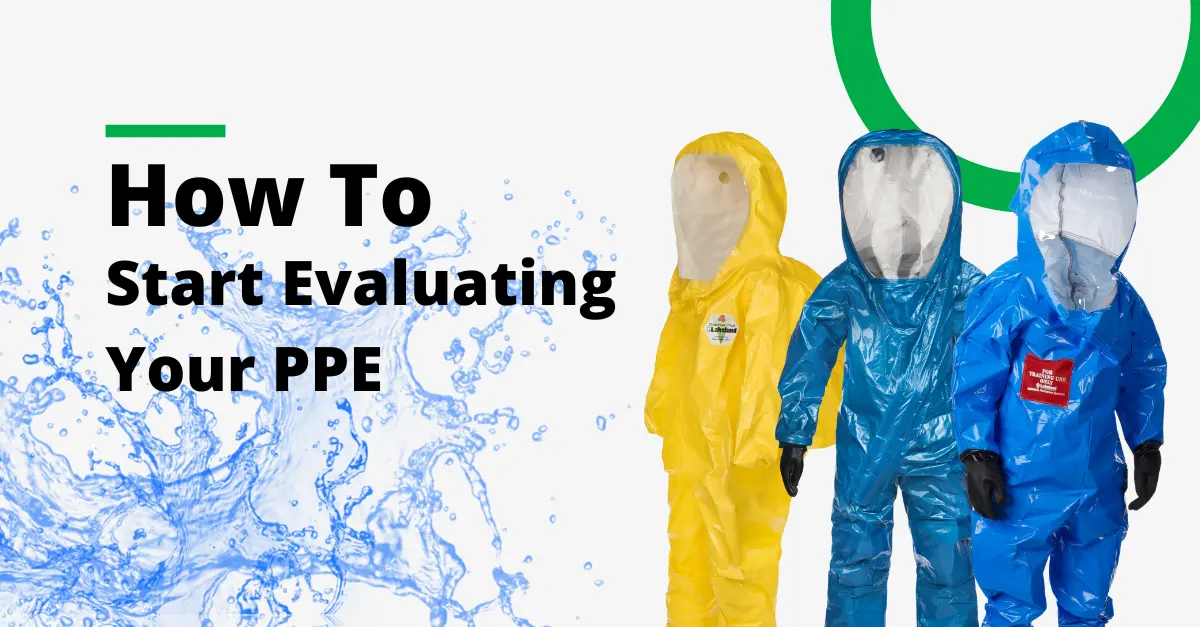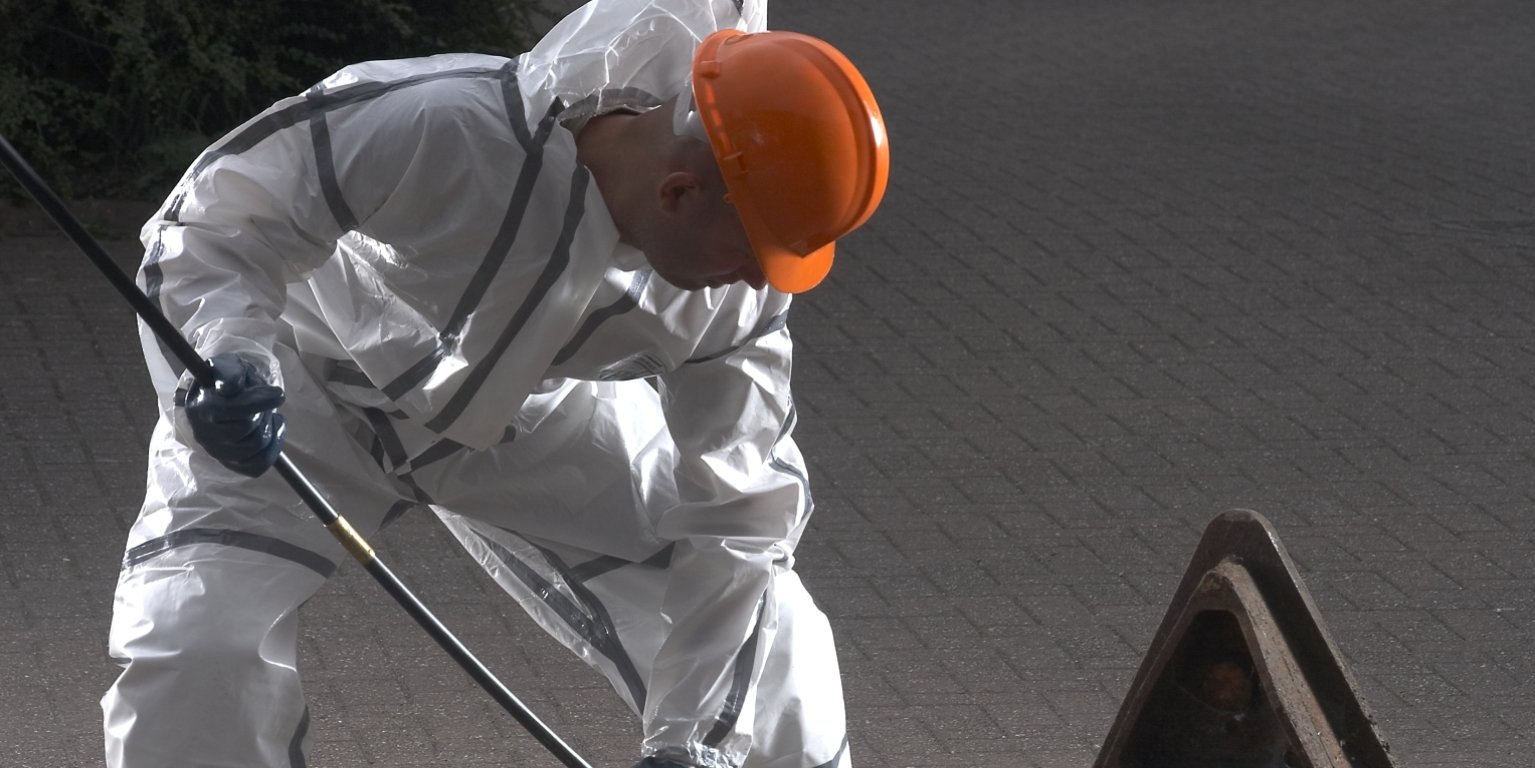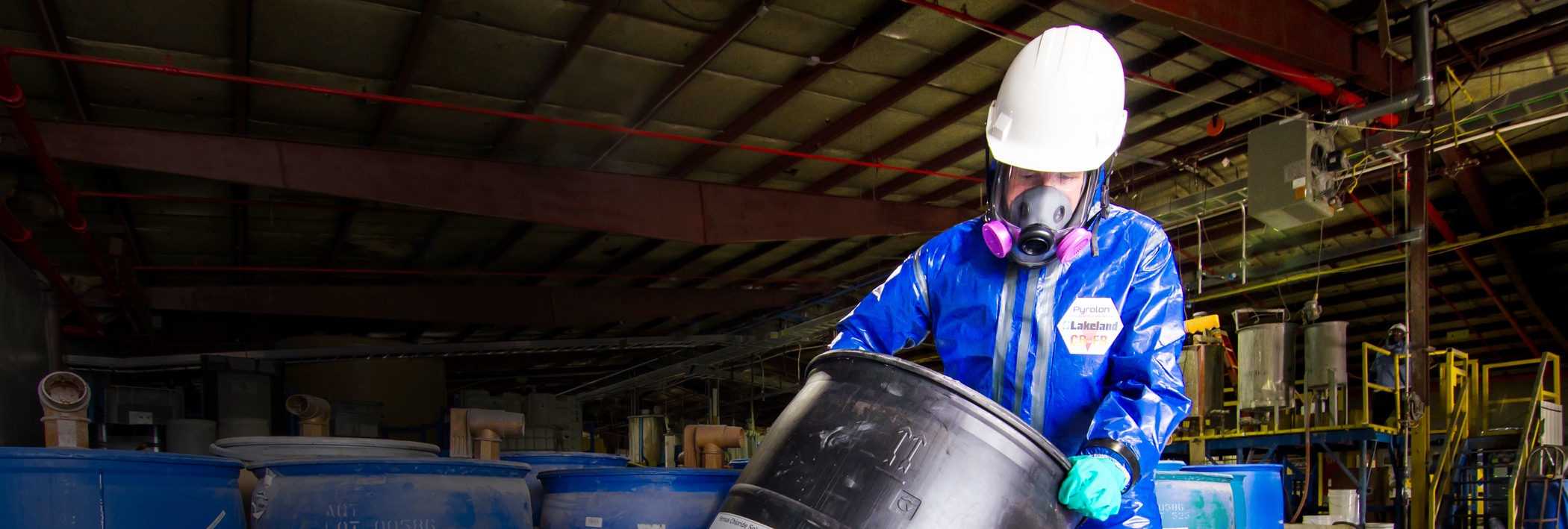Disposable cleanroom suits and garments offer protection to your people, product, and controlled environment. How confident are you in your current garment selection?
Whether you require cleanroom suits for high-tech manufacturing, pharmaceutical manufacturing or compounding, biotechnology, food industry, or medical device manufacturing, there are critical Institute of Environmental Sciences and Technology (IEST) standards you must consider as you evaluate the right garment for your application.
Lakeland Industries takes pride in offering disposable, single-use clean-manufactured sterile and non-sterile cleanroom apparel. If you are tasked with selecting a disposable, single-use, non-woven cleanroom garment for your application, consider the following IEST evaluation standards:
1. Cleanliness and Cleanability
The quality of cleanliness in a controlled environment is significantly affected by the amount of particles generated by the garments worn by employees. Depending on the manufacturing process used for your cleanroom garment, it is possible they may not be low in particulates. In fact, just because something is sterile, doesn’t mean it’s free from contaminants.
- A ‘clean and sterile’ garment is both sterile and clean manufactured.
- A clean-manufacturing facility ensures that controls are in place to reduce the likelihood that contaminants are present during the manufacturing process.
Document IEST-RP-CC003.4 outlines all aspects of cleanroom garment systems including guidance for the selection, specification, maintenance, and testing of garments or apparel. It is important to ensure that your garment manufacturer is audited for compliance to IEST-RP-CC003.4.
2. Electrostatic Properties
Electrostatic charge generation control is critical in microelectronic and medical device manufacturing. Electrostatic charges can be attributed to cleanroom garments and have been proven to reduce product yield, disrupt the work equipment, and cause surface particle collection by electrostatic attraction (ESA). As a result, ESA is a growing concern because it can destroy an electronic part by causing a direct voltage surge, or bond contaminants to product surfaces.
As you select a cleanroom suit or garment, review the properties of the garment that promote ESD conformance and static dissipative performance.
3. Biological Properties
There is always a threat of bacterial contamination in controlled environments. This occurs when viable microorganisms find a way into a cleanroom. Selecting the right cleanroom suit can help ensure biological hazards do not find their way into your cleanroom and products. Consider cleanroom apparel that is:
- Able to contain human-generated microorganisms
- Sterility Assurance Level
- Clean-manufactured
- Designed for best fit and easy donning to reduce excursions
- Packaged to reduce excursions when handling
4. Durability
The day-to-day tasks within a cleanroom can be tough on garments and apparel. As such, it is important that you select a cleanroom garment with the ability to withstand:
- Donning and doffing procedures with an emphasis on reducing excursions
- Repetitive movements often associated with the manufacturing process
- Mechanical stress as a result of cleanroom applications
5. Comfort
Historically, cleanroom suits have been designed to protect the wearer and the cleanroom from hazards and contamination with little consideration of comfort.
Modern cleanroom apparel, however, does offer some construction adaptations to improve comfort for your employees, including:
- Easy donning and doffing
- Flexibility in the fabric, which improves freedom of movement and reduces restriction
- Raglon set sleeves for greater mobility
- Consistent ANSI/ISEA 101-2014 Recommended Sizing
- Practical design with feature modifications to fit your cleanroom application
6. Opacity
If a garment lacks opacity, it is probably not a true protective barrier. As you select the proper single-use cleanroom garments for your controlled environment, ensure they are one of the six types of recommended non-woven fabrics:
- Spunbonded or thermal bond
- Flash spun
- Melt blown
- Spunbonded/melt-blown/spunbonded (SMS)
- Film laminate
- Microporous film laminate
7. Particle Filtration Efficiency
Cleanroom garments should offer particle filtration efficiency (PFE). Testing for PFE evaluates the non-viable particle retention of filter media. Filtration is essential to help prevent human-generated contamination from reaching and influencing cleanroom products or processes, but at the same time, it must permit the body to breathe. Your cleanroom garment must be able to retain contaminants within the garment while maintaining a level of comfort and breathability for the wearer.
8. Microbial Penetration
As you select cleanroom suits and cleanroom apparel, the most critical consideration is that the garment provides an adequate protective barrier for the human micro-environment, while at the same time, preventing penetration of both viable and non-viable particles.
Wherever there are people operating within a cleanroom, there is a risk of microbial contamination. Protecting an aseptic cleanroom from any microbial penetration is essential for the safety of the products being produced. Evaluate the construction, cleanliness and materials to ensure the cleanroom garment is working effectively for you.
9. Chemical Compatibility
Cleanroom garments can be exposed to a wide range of hazardous chemicals, compounds, and conditions. Both woven and non-woven cleanroom fabrics, therefore, must be strong, durable, and offer the wearer a level of protection.
Cleanroom fabric, when exposed to hazardous materials, must be resistant to:
- Spilled chemicals (acids or alkali)
- High heat sources*
- Infrequent flash fires*
- Hypergolic propellants
- Electrostatic discharge (ESD)
- Particulate accumulation
*Single-use Cleanroom garments do not protect the wearer from high heat sources or flash fires. Typical cleanroom garments are not flame retardant or resistant.
10. Fluid Resistance
Cleanroom suits and apparel must be able to withstand penetration and/or pass through of fluid or particulate matter. Non-woven fabrics offer superior fluid resistance and should be the primary contender if this is a critical requirement in your application.
Reusable cleanroom garments must be constructed from fabrics woven with continuous synthetic multifilament yarns and must protect your employees, the product, and the cleanroom from contamination.
As you select your next cleanroom suit, garment, or piece of apparel, don’t forget to weigh each option against the recommended IEST evaluation standards.



